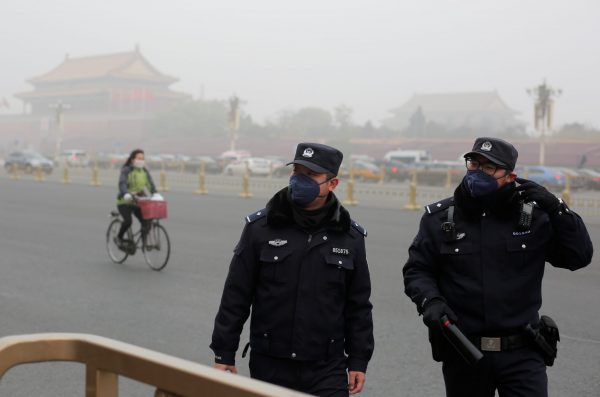Messages about where the country is heading (to great nation status by 2021), how it will get there (state enterprises in a hybrid market economy) and why it is doing this (to have a powerful country never again victimised by the outside world) are rammed home.
The most forceful sign of Xi’s leadership aspirations — the lifting of term limits for the position of president — framed the year. This was enacted at the National People’s Congress in March with very little discussion beforehand and it is the first time such a change has been undertaken since the Deng era in the early 1980s. It was either the action of a supremely confident leadership or a nervous one.
At the end of the day, the presidency is not the most powerful position in China — that remains the party secretary. Even so, the move attracted much critical comment. It confirmed to many that Xi was aiming for a perpetual presidency and that the expected moment of his retirement would not be 2023, but much later.
China’s hubristic leadership (as its critics would have) sailed into stormy waters when the 45th President of the United States proved good on his threats to load tariffs on Chinese imports and start a wholesale trade war.
Chinese leaders in the last few decades have worked on two assumptions. The first was that the United States would never walk away from the global, rules- and treaty-based system it had spent time constructing since the Second World War. The second was that China’s internal challenges would always be a priority for the country and that the outside world just needed to be predictable and stable for it to focus on this. Both assumptions were undermined in 2018, the first perhaps fatally. Trump has proved willing to ratchet up the amount of goods being targeted and to place pressure on others to also review their relationship with China.
Trump’s onslaught is a study in itself but it’s also revealing much about how China under Xi responds to such full-frontal pressure. For a while, the Chinese government seemed bewildered and hesitant in its response. It launched a public relations campaign explaining the importance of free trade and China’s own contribution to the World Trade Organization since 2001. It then attempted to retaliate with tariffs on soya beans and other goods exported in high quantities from US states important for Trump in the November mid-term elections. There was also a move to grow closer to and build a larger strategic relationship with the European Union (EU) at the EU–China summit in July, and with Japan.
None of these responses have yet proved fully effective. The European move was cooled by the President of the European Commission’s July visit to Washington to try to lift some of the tariffs also imposed on the EU. As with China’s hopes unilaterally to lift the EU–China arms embargo over a decade before, this only reinforced China’s conviction that the EU would never change its final allegiance to the United States, no matter how problematic and rough its treatment. Japan has also entered trade negotiations with the United States.
The November mid-terms produced a Democrat-controlled House of Representatives, but hardly the massive backlash against Trump that was expected. And if the reaction to the large Import Conference held by China in November is anything to go by, the rest of the world has now caught some of the United States’ scepticism towards Beijing’s rhetoric about open markets and win–win outcomes given that they so often seem to simply go China’s way.
US Vice President Mike Pence’s statement on China on 4 October at the Hudson Institute thus merely appeared as the summation of all the issues that had been percolating before then. The long list of grievances — running from intellectual property violations to ones on human rights — acted as a manifesto of the many issues that the Trump administration has with the world’s second largest economy.
Concerns are mounting about Xi’s response to this. At a time when the country is suffering further reputational damage because of the gargantuan security crackdown in Xinjiang and evidence of repression has never been stronger, many are again asking the questions that have haunted China’s leadership for the last few years. Is Xi’s power for real? Can he really enforce positive change? Will the country avoid political reform?
These questions are no easier to answer than they ever were. What we do see, though, are clear signs of a country whose leadership lacks both imagination and any real ability to make fundamental political and social changes that might impact its desire for total control.
This year will probably be remembered — in China at least — as the year that the hard times began.
Kerry Brown is Professor of Chinese Studies and Director of the Lau China Institute at King’s College London. His latest book is China’s Dream: The Culture of Chinese Communism and the Secret Sources of its Power, published in 2018.
This article is part of an EAF special feature series on 2018 in review and the year ahead.

